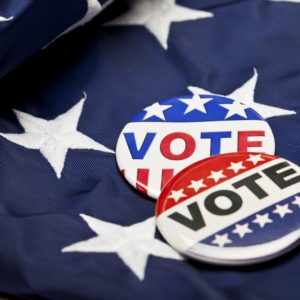The 2020 presidential election contest gets serious on February 3 when Iowa holds its first-in-the-nation caucuses. This will be followed by a series of primaries and caucuses in other states, which continue through June 16 and end with the party conventions during the summer, when each party’s candidates for president and vice president formally will be nominated.
The quiz below, from the Ashbrook Center at Ashland University, provides an opportunity for you to test your knowledge of the presidential nominating process.
1. In 2019, several states changed their nominating process from caucus to primary. Which of the following states did not make this change?
A. Colorado
B. Nevada
C. Utah
D. Washington
2. In which Article of the U.S. Constitution are the rules for selecting presidential nominees laid out?
A. Article II
B. Article III
C. Article IV
D. None of the above. There is no mention of this in the Constitution.
3. Which Constitutional Amendment provided for separate ballots for president and vice president?
A. 10th Amendment
B. 11th Amendment
C. 12th Amendment
D. 13th Amendment
4. Iowa caucus-goers will be the first to express their preferences for their party’s presidential nominee in 2020. Voters from which state or states will be the last?
A. New Mexico
B. South Dakota
C. Montana
D. All of the above
5. While Iowa will be the first state to hold voter caucuses, which state will hold the first primary?
A. Arkansas
B. California
C. New Hampshire
D. North Carolina
6. What is the name given to the day when the greatest number of caucuses and primaries take place?
A. Shrove Tuesday
B. Super Tuesday
C. Fat Tuesday
D. Super Saturday
7. In several states, all candidates — regardless of political party affiliation — run on one ballot in one primary for the state’s nomination. Which of the following terms is not used to describe this type of primary?
A. Jungle primary
B. Blanket primary
C. Non-partisan primary
D. Open primary
8. All of the following states except one allows 17-year-olds to vote in primary elections (assuming they will be 18 by the date of the general election). Which one?
A. Alabama
B. Connecticut
C. Indiana
D. New Mexico
9. The current nominating system originated in:
A. 1787, with the Constitution
B. 1832, with Andrew Jackson’s re-election
C. 1971, with the McGovern-Fraser Commission
D. 1936, after FDR’s re-election
10. In the 1980s Democrats added a certain group of people to the process to ensure that party leaders maintained some control over the nomination process. This part of the Democratic nomination process was controversial in 2008 and 2016 and was changed in time for 2020. What were the people in this group called?
A. Electors
B. Superdelegates
C. Judges
D. Party whips
Answers: 1-B, 2-D, 3-C, 4-D, 5-C, 6-B, 7-D, 8-A, 9-C, 10-B

